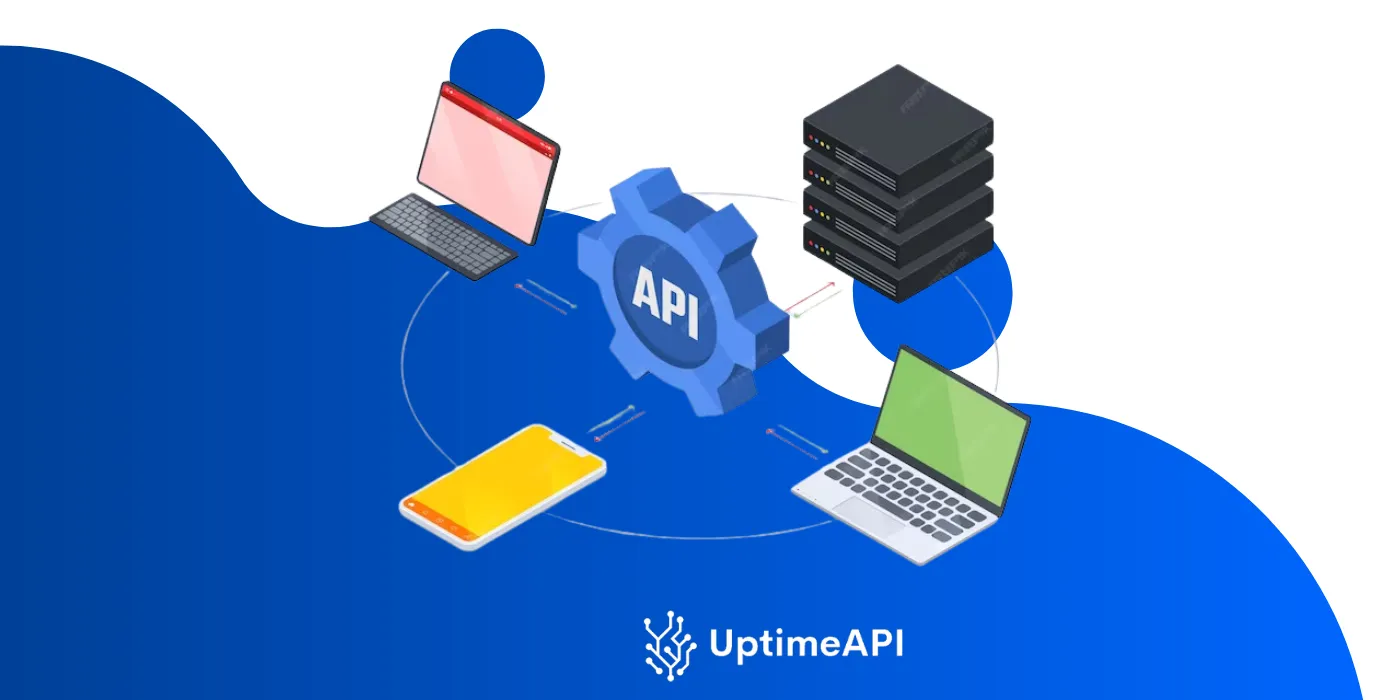REST API Monitoring Tool: What Is An API Tracking Tool?

In the digital age, where connectivity and seamless communication are crucial for businesses, APIs (Application Programming Interfaces) play a pivotal role. They serve as the building blocks that allow different software systems to interact and share data. However, ensuring the reliability and performance of APIs is essential to maintain the smooth functioning of applications. This is where API tracking tools come into play, providing businesses with the capability to monitor their APIs effectively. In this article, we'll delve into what an API tracking tool is and how it benefits businesses, focusing on Uptime API as a prime example of such a tool.
Understanding API Tracking Tools
API tracking tools, also known as API monitoring tools, are software solutions designed to monitor the uptime, performance, and reliability of APIs in real-time. They continuously monitor the endpoints of APIs, sending alerts when downtime or performance issues occur. These tools help businesses ensure that their APIs are functioning as expected, minimizing disruptions and optimizing user experience.
The Role of Uptime API
Uptime API is a leading API tracking tool that specializes in monitoring REST APIs. With its intuitive interface and powerful features, Uptime API simplifies the process of monitoring APIs, enabling businesses to detect and resolve issues promptly.
Key Features of Uptime API
Let's explore some of the key features that make Uptime API an invaluable tool for API tracking:
Real-time Monitoring
Uptime API offers real-time monitoring of API endpoints, providing instant alerts when downtime or performance issues are detected. This proactive approach allows businesses to address issues promptly, minimizing the impact on users.
Customizable Alerts
Uptime API allows users to customize alert notifications according to their preferences. Whether it's email, SMS, or Slack notifications, users can choose the alert channels that best suit their needs. Additionally, users can define threshold values for response time and error rate to trigger alerts, ensuring that they are notified only when necessary.
Historical Performance Data
With Uptime API, businesses can access historical performance data for their APIs, including uptime, response times, and error rates. This data provides valuable insights into the overall health and performance of APIs, helping businesses identify trends and patterns over time.
Global Monitoring Locations
Uptime API offers monitoring from multiple global locations, allowing businesses to assess the performance of their APIs from different geographical regions. This global perspective helps businesses detect regional outages and optimize performance for users worldwide.
How Uptime API Works
Uptime API employs a straightforward mechanism to monitor APIs effectively. Here's how it works:
- Endpoint Configuration: Users start by adding the endpoints of their REST APIs to be monitored. They specify the request method, URL, and expected response code for each endpoint.
- Monitoring Interval: Users can choose the monitoring interval based on their requirements. Uptime API offers flexible monitoring intervals, ranging from a few seconds to several minutes.
- Alert Configuration: Users configure alert notifications to be informed about any downtime or performance issues promptly. They define threshold values for response time and error rate to trigger alerts.
- Dashboard and Reports: Users can access an intuitive dashboard to view real-time status updates of their APIs. They can also dive deeper into historical performance data and generate detailed reports for further analysis.
Why Choose Uptime API?
- Simplicity: Uptime API is designed with simplicity in mind, making it easy for businesses of all sizes to set up and use. Users don't need to be monitoring experts to leverage its capabilities effectively.
- Reliability: With its robust monitoring infrastructure and global network of monitoring locations, Uptime API ensures reliable and accurate monitoring results, giving users peace of mind.
- Cost-effectiveness: Compared to building an in-house monitoring solution or opting for expensive enterprise-grade tools, Uptime API offers a cost-effective solution without compromising on features or performance.
- Scalability: Whether it's a small startup or a large enterprise, Uptime API scales effortlessly to meet growing monitoring needs. Users can add or remove endpoints dynamically without any hassle.
Getting Started with Uptime API
Getting started with Uptime API is quick and easy. Here's how:
- Sign Up: Sign up for an account on the Uptime API website.
- Add Endpoints: Add the endpoints of your REST APIs that you want to monitor.
- Configure Alerts: Configure alert notifications according to your preferences.
- Monitor and Analyze: Monitor the performance of your APIs in real-time and analyze historical data to identify areas for improvement.

Conclusion
In conclusion, API tracking tools like Uptime API are essential for businesses looking to ensure the reliability and performance of their APIs. With features such as real-time monitoring, customizable alerts, and historical performance data, Uptime API provides businesses with the tools they need to monitor their APIs effectively. By leveraging Uptime API, businesses can minimize disruptions, optimize user experience, and ultimately drive business success.